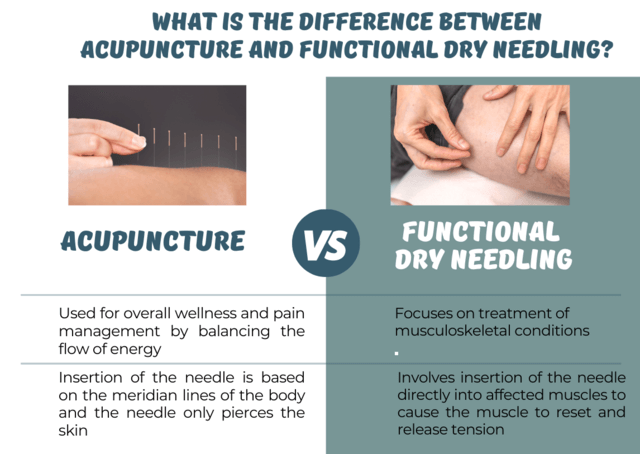Acupuncture and dry needling therapy are two types of osteopathic therapies. They’re similar but they’re not exactly the same.
Dry Needling and Acupuncture are both pseudo-scientific treatments used by many Osteopaths, with the purpose of trying to treat both physical and mental health issues.
With so many different types of treatments available, it’s important to know the differences between them and choose one that suits you best.
While both acupuncture and dry needling have similar characteristics, they’re not exactly the same thing.
What is Acupuncture and what is it used for?
Acupuncture dates back to ancient times in China, where it was originally used for curing disease, relieving pains and stress, and improving overall health.
While the technique has evolved since its inception, the principle of using extremely fine needle injections to stimulate nerve endings has not changed.
There is no scientific proof that acupuncture works, but there is good reason to believe that it may be effective for some people and certain health conditions.
It actually seems that inserting these thin needles into the skin causes them to trigger the body’s own natural painkillers, such as increasing the level of serotonin.
Serotonin is the hormone that is responsible for feelings of happiness and well-being.
Acupuncturists claim that their treatments can relieve pain within three to four days after treatment.
However, it may take longer for some people to experience results than others.
You shouldn’t use acupuncture as an alternative medicine for the long term unless there is no conventional therapy available.
What exactly is Dry Needling and what is it used for?
Dry Needle Therapy refers to alternative ways of delivering acupuncture treatments. It was originally created as an alternative way of treating pain.
Dry needling uses a fine, sterile stainless steel needle without injecting any fluid into the skin or muscles (hence why it is called “dry”).
It penetrates the skin and muscles with tiny holes (called microtrauma) which cause temporary inflammation and trigger healing processes.
Dry needling aims to alleviate muscular aches and pains by increasing blood flow to the affected area.
By using thin needle techniques, you can increase someone’s range of motion and flexibility by stimulating tender spots within their body.
This is why this kind of treatment is often used for sports injury recovery.
Despite this, dry needle techniques are usually employed along with other forms of post-workout rehabilitation such as training or heat therapy.
The main differences between the two practices

Acupuncture and dry needle techniques differ mainly in their main objectives.
Acupuncture is typically practiced for numerous reasons including pain relief, relaxation, stress reduction, improvement of one’s health, and much more. However, dry needling is primarily used to treat muscle pain.
Because of this, the placement of the needle varies between the practices, with the dry needle inserted into the muscle and the acupuncture needle placed at specific trigger points.
Another difference between acupressure and dry needling is the fact that the latter uses strong stimulation in order to alleviate muscular pain or spasms, whereas acupuncture aims to encourage the body to heal itself naturally.
Acupuncture releases endorphins and increases levels of serotonin within the brain, both of which help relieve pain. Dry needling helps target muscles directly.
Should you go for Dry Needling or Acupuncture?
Acupuncture and dry needling are two different types of treatments for relieving pain and resolving physical and mental health conditions.
Both techniques involve using very thin needles to target particular parts of the body, causing patients little to no pain during the needle injection.
Acupuncture and dry needle therapy are both completely safe, but they’re not right for everyone. It’s always best to check with your acupuncturist before trying them out.
At first, we’d suggest doing no more than two dry needle or acupuncture treatments per week. Then, once you’ve been treated for a few weeks, you could space out your treatments even further.
If you think you might be able to use dry needling or acupuncture for pain relief, then contact a professional and qualified practitioner who specializes in these treatments.
They can help you determine if these treatments are appropriate for you and your situation.
Comments are closed here.